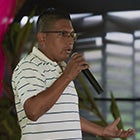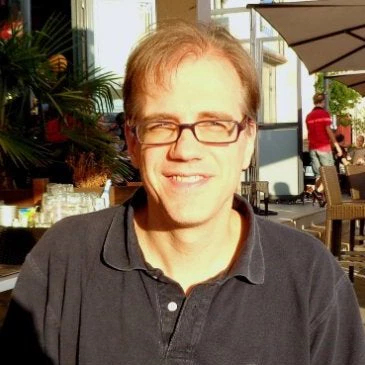 Representative of the Ipeti-Emberá region (Panama), in the fortes. Source: World Bank
Representative of the Ipeti-Emberá region (Panama), in the fortes. Source: World Bank
Every day we ask ourselves how we can best protect our families. Usually, the answer is that we need to provide unconditional love, care and support to our loved ones. However, in the Alto Chirripó region of Costa Rica, the Cabécar community of Grano de Oro has a deeper understanding of protecting the family.
The role of forests is not only to protect the indigenous Cabécars from the effects of climate change. Forests are a fundamental pillar of the family structure. By conserving and preserving their forests with the same affection they show to their loved ones, these people demonstrate a deep-rooted bond with nature that reinforces the commitment of their ancestors to safeguard the natural environment for future generations .
“Our worldview is to interact with nature just as our parents and our Cabécar ancestors taught us: nature is our family. We are part of nature and nature is part of us.”
David Loria Lázaro, advisor to the Cabécar people
The importance of indigenous peoples in forest protection
This robust approach by protectors of the forests, together with government commitments, have made Costa Rica a world leader in forest conservation. For example, through the Environmental Services Payment Program, 172,000 hectares of forest were protected between 1997 and 2023, including 64,105 hectares of regenerated woodland. This effort not only strengthened the role of the country’s indigenous peoples in decision-making, but also clearly demonstrated their relevance and their need to have access to the natural resources they depend on.
Why is it also essential to enable indigenous peoples’ access to financial resources? Despite making up only 6 percent of the world's population, these groups actually manage around 80 percent of global biodiversity, and 25 percent of the above-ground carbon in the remaining tropical forests. However, according to a Rainforest Foundation Norway report, between 2011 and 2020 projects supporting land tenure and forest management for indigenous peoples and local communities received a mere USD 270 million annually—less than 1 percent of international climate aid over the same period.
Nevertheless, there are a number of practical and effective approaches that can enhance the involvement of indigenous peoples in result-based climate finance, especially in critical areas such as the application of traditional knowledge in forest management, the realization of land and natural resource rights, and the expansion of modes of participation and consultation.
Some key messages for this agenda:
- Facilitate direct access to financing
- Implement equitable benefit distribution mechanisms
- Address both carbon and non-carbon benefits
- Promote the active participation of indigenous peoples in consultation and decision-making processes
- Foster capacity building for indigenous peoples, focusing on technical and management skills
- Provide training to governments to strengthen their commitment to uphold indigenous rights and partner with indigenous peoples on climate action
The above agenda was addressed by government officials and representatives of indigenous peoples, local communities, and civil society who assembled in the capital of Costa Rica in November 2023 for the Global Dialogue of Indigenous Peoples and Local Communities on Results-Based Climate Financing. This event was co-sponsored by the World Bank, the EnABLE (Enhancing Access to Benefits while Lowering Emissions) fund, and the Forest Carbon Partnership Facility (FCPF), in collaboration with Germany’s Federal Ministry of Economic Cooperation and Development (BMZ).
“The continued participation of marginalized communities and groups is essential, whether indigenous peoples, local communities or women, to strengthen public support and the impact of programs. The forests are still here because with your knowledge, experience and skills you have taken care of them.”
Benoît Bosquet, Director of Sustainable Development for the Latin America and the Caribbean Region, World Bank
Allies of indigenous peoples
The Bank’s discussions with indigenous peoples’ representatives have evolved positively in recent years. Initially wary of REDD+ and prone to making demands for land rights to be recognized as a prerequisite for their willingness to engage, many indigenous peoples now aspire to be considered as full partners of governments in decision-making activities related to results-based financing schemes. This progress partially reflects the knowledge and trust building around such schemes that has taken place over the last decade.
The World Bank and the FCPF have played a crucial role within this framework through the FCPF’s Capacity Building Program on REDD+ for Forest-Dependent Peoples and Southern Civil Society Organizations, among others. Despite such noteworthy efforts, the participants in the Costa Rica Global Dialogue made a strong case for scaling up these initiatives.
The experience of the Cabécar community of Grano de Oro shows us that protection goes beyond people. Protection involves looking after our environment, our family. These beliefs challenge us to adopt a mentality of shared responsibility and assign greater weight to an approach which fuses ancestral knowledge with sustainable development and the fight against climate change.
To receive one article a week,
Related articles




Join the Conversation